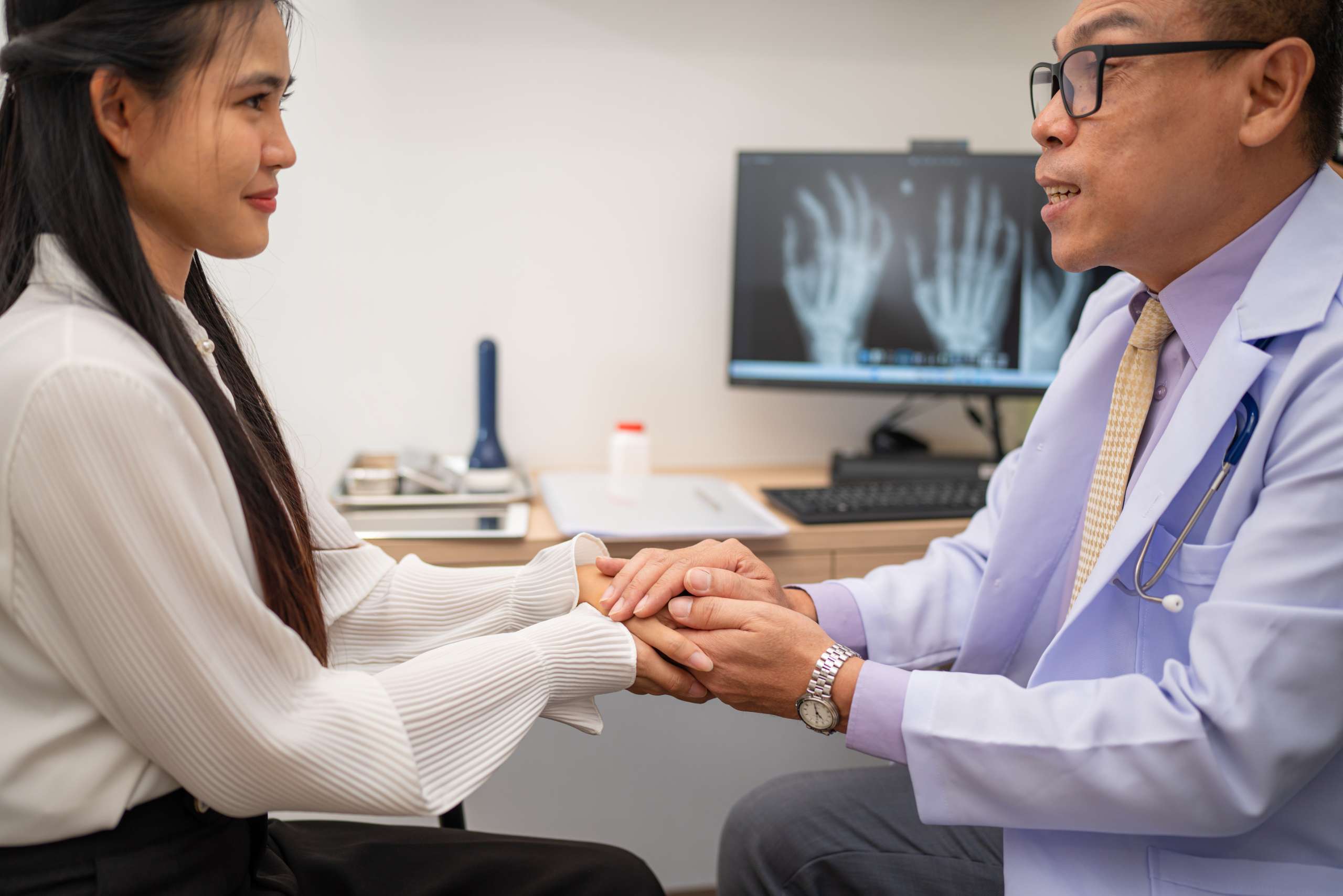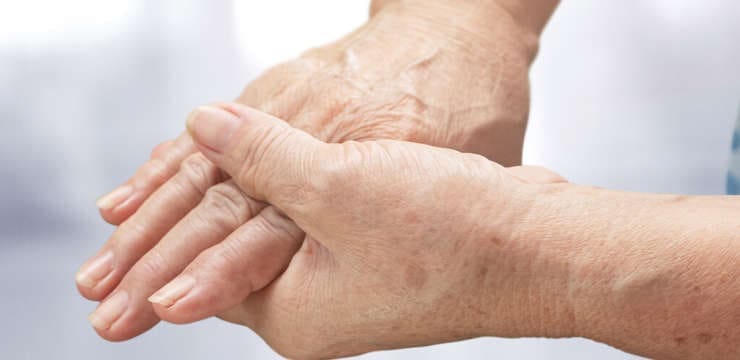
Explore functional wellness for rheumatoid arthritis for improved health. Learn how holistic approaches can enhance your well-being.
Table of Contents
Introduction
Millions of people around the world have rheumatoid arthritis (RA), which is a long-term disease. It’s not just joint pain; it’s an autoimmune disease in which your immune system attacks its own tissues, leading to inflammation, swelling, and joint damage. If you have RA, you know how it can make everyday tasks hard. On bad days, even things like walking or holding a cup can feel impossible. But there is hope. Using both chiropractic care and functional wellness together is a full-body way to deal with RA symptoms without having to rely on drugs or surgery. This blog post goes into great detail about the medical reasons why this combination works. It talks about what causes joint pain, how RA affects your arms and legs, environmental factors that play a role, and different non-surgical treatments and tricks to help you feel better. We will also share some of Dr. Alexander Jimenez’s thoughts, as he is a leading expert in this area.
If you’ve just been diagnosed with RA or have had it for years, knowing these things can help you take charge of your health. Let’s start by talking about what RA is and why a natural, holistic approach like chiropractic and functional wellness can really help.
Understanding Rheumatoid Arthritis: The Basics
Rheumatoid arthritis is an autoimmune disorder that primarily targets the synovium—the lining of the membranes that surround your joints. This leads to painful swelling that can eventually result in bone erosion and joint deformity. Unlike osteoarthritis, which is often due to wear and tear, RA involves the immune system mistakenly attacking healthy tissue. According to research, RA affects about 1% of the global population, with women being more commonly affected than men. The disease doesn’t just stay in the joints; it can also cause systemic issues that affect the whole body. This includes fatigue, fever, and even complications in organs like the heart and lungs. Early diagnosis is key because starting treatment soon can prevent long-term damage. Diagnostic tools such as blood tests for rheumatoid factor and anti-citrullinated protein antibodies, along with imaging, help confirm RA. But why does RA happen? It’s a mix of genetics, environment, and chance. Genetic factors make some people more susceptible, but triggers like infections or smoking can kickstart the disease process.
What Causes Joint Pain in General?
Joint pain is a common complaint, and it can stem from many sources beyond RA. Understanding these causes helps put RA into perspective and shows why managing it requires a targeted approach. First, injury or trauma is a big culprit. Sprains, strains, or fractures can damage joint structures like ligaments, tendons, or cartilage, leading to pain. Overuse from repetitive motions, common in jobs or sports, wears down joints over time. Inflammation is another key cause. Conditions like bursitis (inflammation of fluid-filled sacs that cushion joints) or tendinitis (tendon inflammation) can cause swelling and discomfort. Infections, such as septic arthritis caused by bacteria entering the joint, can lead to severe pain and require immediate medical attention. Metabolic issues also play a role. Gout, caused by uric acid crystals building up in joints, results in sudden, intense pain, often in the big toe. Hormonal changes, especially in women during menopause, can contribute to joint issues due to shifts in estrogen levels, which affect joint health. Aging naturally causes joint pain as cartilage thins and joints lose flexibility. Obesity adds extra stress on weight-bearing joints like knees and hips, accelerating wear. Finally, autoimmune diseases like RA turn the body’s defense system against itself, causing chronic inflammation and pain. This differs from mechanical causes because it’s not just about physical stress—it’s an internal battle. Recognizing these causes is crucial because treatments vary. For RA-specific pain, addressing the autoimmune aspect is essential, which is where chiropractic care and functional wellness shine by supporting overall body balance.
How Rheumatoid Arthritis Affects the Joints in Upper and Lower Extremities
RA doesn’t discriminate—it can affect any joint, but it often starts in smaller joints like the fingers and toes before spreading. Let’s look at how it impacts the upper and lower extremities. In the upper extremities, RA commonly affects hands, wrists, and elbows. The synovium swells, causing stiffness, especially in the morning. Over time, this leads to “swan-neck” or “boutonniere” deformities in fingers, where joints bend abnormally. Wrists may fuse, limiting movement, and elbows can develop nodules—hard lumps under the skin. Pain here makes gripping or lifting difficult, affecting daily activities like writing or cooking. In the lower extremities, feet, ankles, and knees bear the brunt. Toes might develop hammertoes or bunions due to inflammation, shifting bones. Ankles swell, making walking painful, and knees can become unstable, leading to a limp. RA in the hips, though less common early on, causes deep groin pain and reduced mobility. The damage comes from chronic inflammation eroding cartilage and bone. Cytokines like TNF-? and IL-6 fuel this process, leading to pannus formation—a thickened synovial tissue that invades joints. In extremities, this can lead to reduced range of motion, muscle weakness from disuse, and potential nerve compression, resulting in numbness. RA’s effects aren’t symmetrical always, but often both sides are involved. Managing this requires reducing inflammation to preserve joint function.
Environmental Factors Influencing Joint Health and RA Development
Your environment may make RA worse by creating overlapping risk profiles, which can have a big effect on joint health. Genetics and these other factors work together to make some people more likely to get sick. Smoking is the most common cause of environmental problems. For people who have genetic predispositions like HLA-DRB1, it raises the risk of RA by 1.5 to 3.5 times. Smoke can not only irritate the lungs, but it can also cause inflammation that spreads to the joints. Air pollution, including fine particles from factories and cars, increases the risk of RA. Pollutants from construction sites, such as silica dust, can affect the lungs in ways similar to RA symptoms, leading to joint inflammation. Nutrition is also important. Diets rich in fish, vegetables, and olive oil reduce inflammation, while diets high in red meat and low in omega-3 fatty acids protect joints. Obesity is caused by an unhealthy diet, which puts more stress on the body and prompts fat tissue to release chemicals that trigger inflammation. An infection might be one reason. Bacteria that cause gum disease, such as Porphyromonas gingivalis, produce enzymes that citrullinate proteins. This bacterium acts like the autoimmune target of RA. Viral infections can also cause the disease in people who are already at risk. Hormonal conditions like low estrogen levels in postmenopausal women raise the risk because estrogen protects joints. Stress, both emotional and physical, raises cortisol levels, which, over time, can harm the immune system and worsen symptoms. Occupational hazards, such as repetitive strain from manual labor, make these risks even worse. These factors create “overlapping risk profiles.” For example, a smoker who also eats poorly and is under a lot of stress has many ways that could lead to RA. Making lifestyle changes to address them is part of functional well-being.
Factors and Symptoms: What Rheumatoid Arthritis Does to the Joints
RA’s effects on joints are gradual and complex. Immune dysregulation, in which autoreactive T and B cells attack synovial tissue, is a major factor. Autoantibodies, such as rheumatoid factor and ACPA, attack proteins, worsening inflammation. Joint pain, swelling, and warmth are the first signs. It is common for stiffness to last more than 30 minutes in the morning. As it gets worse, joints change shape, like ulnar deviation in the hands (fingers moving toward the pinky) or knee valgus (knock-knees). Pain is throbbing or aching, and it gets worse when you move. Fatigue and a low-grade fever are signs that the whole body is involved. Rheumatoid nodules, dry eyes (from Sjogren’s overlap), or lung fibrosis are examples of extra-articular symptoms. RANKL activates osteoclasts, which break down bone and cause joint destruction. Enzymes such as matrix metalloproteinases break down cartilage, making joint spaces smaller, as seen on X-rays. Things that make this worse: Unmanaged inflammation speeds up damage. Chronic inflammation can lead to other diseases, such as heart disease. Psychological factors, such as depression, intensify perceived pain. Early intervention stops this chain reaction, keeping the joints healthy.
The Clinical Rationale for Chiropractic Care Combined with Functional Wellness in RA Management
Chiropractic therapy aims to realign the spine and joints to improve mobility, ease pain, and enhance the nervous system’s function. Gentle changes may help people with RA by improving blood flow, lowering joint tension, and increasing their range of motion. Functional wellness builds on this by addressing root causes through lifestyle changes, stress reduction, exercise, and diet. They work together to fight the autoimmune part of RA. In a clinical context, this reduces cytokine levels, as evidenced by studies showing that lifestyle therapies lower TNF-? and IL-6 levels. Chiropractic is helpful for the body in a mechanical way: Misalignments, or subluxations, can make inflamed joints hurt more. Adjustments bring the body back into alignment, which relieves muscle strain and nerve pressure. When combined with functional wellness approaches like anti-inflammatory foods, immune modulation is supported. Studies show that exercise, an important part of healthy living, can help with RA by reducing joint pain and swelling. Another noninvasive way to reduce inflammation is to stimulate the vagus nerve. This patient-centered approach reduces drug side effects and gives people more control over their health.
Non-Surgical Treatments and Tricks to Reduce RA Symptoms and Joint Pain
Non-surgical options are vital for RA management. From medications to natural remedies, here’s a comprehensive list.
- Disease-Modifying Antirheumatic Drugs (DMARDs): These slow disease progression. Methotrexate is first-line, often combined with biologics such as TNF inhibitors (e.g., etanercept). Targeted therapies, such as JAK inhibitors (tofacitinib), block inflammatory signals.
- Vagus Nerve Stimulation (VNS): Non-invasive devices stimulate the vagus nerve to reduce inflammation and pain in RA.
- Physical Activity: Aerobic and resistance exercises improve function and reduce pain. Aim for 150 minutes weekly.
Natural Remedies:
- Heat and Cold Therapy: Heat relaxes muscles; cold numbs pain. Alternative for relief.
- Acupuncture and Massage: Acupuncture eases stiffness; massage reduces tension.
- Tai Chi and Yoga: Low-impact activities improve flexibility and balance.
- Herbs and Supplements: Turmeric (curcumin) and ginger fight inflammation. Omega-3 fish oil (600-1,000 mg daily) reduces swelling. Ginger supplements decrease pain.
- Anti-Inflammatory Diet: Focus on fish, nuts, fruits, and veggies; avoid processed foods.
Tricks: Use splints for support, practice good posture, and manage weight to lessen joint load. Mind-body techniques like meditation reduce stress-induced flares.
Always consult a doctor before starting new treatments.
From Inflammation to Healing- Video
Clinical Insights from Dr. Alexander Jimenez, DC, APRN, FNP-BC
Dr. Alexander Jimenez has been working in chiropractic care and functional medicine for more than 30 years and is well-known in the field. He is a Doctor of Chiropractic (DC), an Advanced Practice Registered Nurse (APRN), and a Family Nurse Practitioner-Board Certified (FNP-BC). He lives in El Paso, Texas. He uses chiropractic adjustments, functional nutrition, and rehabilitation to treat chronic pain, autoimmune diseases, and injuries. Dr. Jimenez stresses whole-person approaches to conditions like RA, focusing on underlying factors such as inflammation, gut health, and autoimmunity. He uses functional medicine to create personalized plans that include dietary changes, supplements, and lifestyle adjustments to help the immune system function better and ease joint pain. Dr. Jimenez uses advanced imaging, such as digital motion X-rays to assess joint motion, nerve conduction tests to assess how injuries affect the nervous system, and metabolic evaluations to identify imbalances. He uses both chiropractic and medical skills in dual-scope procedures: chiropractic for alignment and decompression, and medical for hormone optimization and weight management. He connects injuries (like trauma that makes inflammation worse) to these tools for RA-like symptoms, making sure that all aspects of care are covered. His podcasts and webinars on inflammation and autoimmunity discuss non-drug options aligned with functional wellness. His multidisciplinary team helps patients avoid surgery by using evidence-based protocols.
Conclusion
Rheumatoid arthritis can be effectively managed non-invasively through the integration of chiropractic adjustments and functional health, targeting both the systemic and mechanical aspects of the condition to improve quality of life. Knowledge and action are the keys to empowerment, from understanding why things happen and what they mean to using natural remedies.
Important Note and Disclaimer: You should only read this article for informational purposes as part of your health education. It is not a substitute for professional medical diagnosis, advice, or care. Before starting any new treatment, especially for a serious illness like rheumatoid arthritis, you should always talk to a trained medical professional. Results may be different for each person, even if the information comes from reliable sources. If your symptoms are very bad, get medical help right away.
References
- American College of Rheumatology & European League Against Rheumatism. (2010). Classification criteria for rheumatoid arthritis. Retrieved from pubmed.ncbi.nlm.nih.gov/25180621/
- Baghdadi, T. (2015). Rheumatoid arthritis. Retrieved from pubmed.ncbi.nlm.nih.gov/27156434/
- Bardin, T., & van den Berg, W. (2022). Joint together: The etiology and pathogenesis of ankylosing spondylitis. Retrieved from pubmed.ncbi.nlm.nih.gov/36325352/
- Chalan, P., et al. (2016). Role of physical activity in the management and assessment of rheumatoid arthritis patients. Retrieved from pubmed.ncbi.nlm.nih.gov/27263964/
- Choi, S., et al. (2021). Promising therapeutic targets for the treatment of rheumatoid arthritis. Retrieved from pubmed.ncbi.nlm.nih.gov/34305919/
- Deane, K. D. (2014). Epidemiology, pathophysiology, and diagnosis of rheumatoid arthritis: A synopsis. Retrieved from pubmed.ncbi.nlm.nih.gov/25180621/
- Dr. Alexander Jimenez. (n.d.). Injury specialists. Retrieved from dralexjimenez.com/
- Dr. Alexander Jimenez. (n.d.). LinkedIn profile. Retrieved from www.linkedin.com/in/dralexjimenez/
- Firestein, G. S., & McInnes, I. B. (2017). Immunopathogenesis of rheumatoid arthritis. Retrieved from pubmed.ncbi.nlm.nih.gov/35055087/
- Jang, D. I., et al. (2021). Rheumatoid arthritis: Pathogenic roles of diverse immune cells. Retrieved from pubmed.ncbi.nlm.nih.gov/35055087/
- Jang, S., et al. (2021). *Management of rheumatoid arthritis: An overview. Retrieved from pubmed.ncbi.nlm.nih.gov/34831081/
- Klareskog, L., et al. (2009). Rheumatoid arthritis. Retrieved from pubmed.ncbi.nlm.nih.gov/22150658/
- Maurer, B., et al. (2022). Osteoarthritis: The importance of hormonal status in midlife women. Retrieved from pubmed.ncbi.nlm.nih.gov/35841775/
- Pavlov, V. A., & Tracey, K. J. (2021). Vagus nerve stimulation in musculoskeletal diseases. Retrieved from pubmed.ncbi.nlm.nih.gov/33548494/
- Arthritis Foundation. (n.d.). 8 natural therapies for arthritis pain. Retrieved from www.arthritis.org/health-wellness/treatment/complementary-therapies/natural-therapies/8-natural-therapies-for-arthritis-pain
- Arthritis Foundation. (n.d.). The ultimate arthritis diet. Retrieved from www.arthritis.org/health-wellness/healthy-living/nutrition/anti-inflammatory/the-ultimate-arthritis-diet
- Baptist Health. (2016). 4 natural arthritis remedies. Retrieved from www.baptisthealth.com/blog/health-and-wellness/4-natural-arthritis-remedies
- Cleveland Clinic. (2022). 5 natural remedies for rheumatoid arthritis. Retrieved from health.clevelandclinic.org/rheumatoid-arthritis-natural-remedies
- Healthline. (n.d.). 17 remedies for rheumatoid arthritis flare-ups. Retrieved from www.healthline.com/health/remedies-rheumatoid-arthritis
- HealthPartners. (n.d.). 12 home remedies for hand arthritis relief. Retrieved from www.healthpartners.com/blog/hand-arthritis-relief/
- Hopkins Arthritis. (2008). Rheumatoid arthritis: Complementary and alternative medicine. Retrieved from www.hopkinsarthritis.org/patient-corner/disease-management/ra-complementary-alternative-medicine/
- Medical News Today. (n.d.). Herbs for joint pain: 9 best types for arthritis. Retrieved from www.medicalnewstoday.com/articles/325760
- RxWellness. (n.d.). Natural treatments for rheumatoid arthritis relief. Retrieved from www.rxwellness.net/discover-holistic-relief-with-natural-treatments-for-rheumatoid-arthritis/
- WebMD. (2024). 17 natural remedies for rheumatoid arthritis pain relief. Retrieved from www.webmd.com/rheumatoid-arthritis/rheumatoid-arthritis-natural-treatments
Disclaimers
Professional Scope of Practice *
The information herein on "Functional Wellness for Patients with Rheumatoid Arthritis" is not intended to replace a one-on-one relationship with a qualified health care professional or licensed physician and is not medical advice. We encourage you to make healthcare decisions based on your research and partnership with a qualified healthcare professional.
Blog Information & Scope Discussions
Welcome to El Paso's wellness blog, where Dr. Alex Jimenez, DC, FNP-C, a board-certified Family Practice Nurse Practitioner (FNP-C) and Chiropractor (DC), presents insights on how our team is dedicated to holistic healing and personalized care. Our practice aligns with evidence-based treatment protocols inspired by integrative medicine principles, similar to those found on dralexjimenez.com, focusing on restoring health naturally for patients of all ages.
Our areas of chiropractic practice include Wellness & Nutrition, Chronic Pain, Personal Injury, Auto Accident Care, Work Injuries, Back Injury, Low Back Pain, Neck Pain, Migraine Headaches, Sports Injuries, Severe Sciatica, Scoliosis, Complex Herniated Discs, Fibromyalgia, Chronic Pain, Complex Injuries, Stress Management, Functional Medicine Treatments, and in-scope care protocols.
Our information scope is limited to chiropractic, musculoskeletal, physical medicine, wellness, contributing etiological viscerosomatic disturbances within clinical presentations, associated somato-visceral reflex clinical dynamics, subluxation complexes, sensitive health issues, and functional medicine articles, topics, and discussions.
We provide and present clinical collaboration with specialists from various disciplines. Each specialist is governed by their professional scope of practice and their jurisdiction of licensure. We use functional health & wellness protocols to treat and support care for the injuries or disorders of the musculoskeletal system.
Our videos, posts, topics, subjects, and insights cover clinical matters, issues, and topics that relate to and directly or indirectly support our clinical scope of practice.*
Our office has reasonably attempted to provide supportive citations and has identified the relevant research studies or studies supporting our posts. We provide copies of supporting research studies available to regulatory boards and the public upon request.
We understand that we cover matters that require an additional explanation of how they may assist in a particular care plan or treatment protocol; therefore, to discuss the subject matter above further, please feel free to ask Dr. Alex Jimenez, DC, APRN, FNP-BC, or contact us at 915-850-0900.
We are here to help you and your family.
Blessings
Dr. Alex Jimenez DC, MSACP, APRN, FNP-BC*, CCST, IFMCP, CFMP, ATN
email: coach@elpasofunctionalmedicine.com
Licensed as a Doctor of Chiropractic (DC) in Texas & New Mexico*
Texas DC License # TX5807
New Mexico DC License # NM-DC2182
Licensed as a Registered Nurse (RN*) in Texas & Multistate
Texas RN License # 1191402
ANCC FNP-BC: Board Certified Nurse Practitioner*
Compact Status: Multi-State License: Authorized to Practice in 40 States*
Graduate with Honors: ICHS: MSN-FNP (Family Nurse Practitioner Program)
Degree Granted. Master's in Family Practice MSN Diploma (Cum Laude)
Dr. Alex Jimenez, DC, APRN, FNP-BC*, CFMP, IFMCP, ATN, CCST
My Digital Business Card






